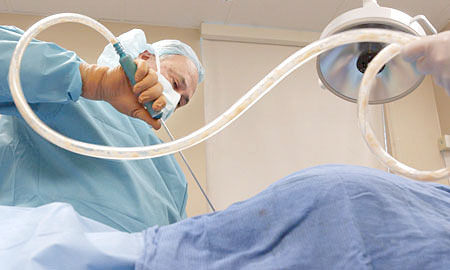Here is a selection of some new offerings at the prestige end of the market, many predicated on exclusive ingredients and newfangled technology:
Super Cream from 3LAB, exclusively at Barneys, joins that brand’s high-priced roster but remains its most expensive launch to date. Co-founder Erica Chung attributes the $875 price to the cream’s Intelligent Targeting Device technology, which is supposed to drive collagen and elastin to the cells that need it the most.
The Bee Venom Mask from Heaven Skin Care became an overnight sensation when word came out that Kate Middleton, wife of England’s Prince William, used it. Soon to be available in the U.S., the $560 Limited Edition Golden Bee Venom Mask contains a high concentration of bee venom, which is supposed to have something of a Botox effect on the skin.
Multi-Active Repair Lifting and Lineless Cream from Kate Somerville‘s Kateceuticals line contains blackberry leaf extract and the oils of grapefruit peel, lime, orange, bergamot and ginger and sells for $195.
The two top-selling products from Perricone MD are Cold Plasma and Acyl-Glutathione, face creams that treat advanced signs of aging. They sell for $155 and $175 respectively.
Kaplan MD’s Cellular Rejuvenating Concentrate, a serum designed to re-texturize the skin, contains a combination of 22 certified organic extracts fused with other proprietary ingredients. It costs $295.
Michael Todd True Organics’ $150 Knu anti-aging cream contains snail extracts rich in protein, lipids, trace minerals, amino acids, peptides and more. It also includes alpha hydroxy acids, fruit stem cells and other ingredients, and it’s designed to lift, firm and tighten skin, smoothing out wrinkles and speeding cell turnover.
Overnight Rescue Relief from dermatologist-to-the-stars Dr. Harold Lancer launched at Nordstrom and at $125 is the top-priced item in the doctor’s line. It’s designed to plump, firm and smooth skin. A key ingredient: placental serum isolates.
Biologique Recherche’s Creme PIGM 400 is specifically designed to lighten and brighten pigment spots. It’s priced at $191.
Niche brand Mila Moursi has reformulated its most expensive products. Among them: Oxy Cellular Renew Cream, which targets a sagging jaw line and facial fatty deposits. It sells for $190.
Resveratrol — an antioxidant found in red wine and grapes — is in a number of new prestige lines, including Vine Vera, whose Resveratrol High-Potency Vitamin Cream is also loaded with vitamins, avocado oil and seaweed extract to reduce signs of aging. It goes for $896.
The same antioxidant is in the just-launched La Contessa Advanced Skincare Peptide Formula Rejuvenating Cream, where it is paired with hyaluronic acid for the reduction of wrinkles. The price is $125.
Tourmaline and sequoia buds are two of the noteworthy ingredients in Carita’s anti-aging Diamond Cream, priced at $600.
Cocoa beans and the inchi seed from Peru, rich with Omega-3 oils, are a big selling point for Rejuvenate Advanced Firming Complex from Amala, which sells for $248.
Also predicated on exotic ingredients is 37 Extreme Actives Extra Rich Cream from Dr. Macrene Alexiades-Armenakas, which has more than 50 ingredients that target multiple problems. It includes barley extract for fortifying the skin, glucosamine for blotchiness, mushrooms for anti-aging and sells for $195.
Global Perfect from Sisley Paris is specifically for pore minimizing, using java tea extract. The price is $210.
Scandinavian brand Freya, just introduced to the U.S., offers Intensive Anti-Aging Serum with a high concentration of nutrient-rich Arctic salmon roe for $130.
The exotic morio orchid from France’s Brittany region is one of the reasons for the $230 price tag on Phytomer’s Pionniere XMF, which is designed to smooth out rough or lined skin.
Gold particles bonded with peptides boost the price of Vie Collection’s Firming Boosting Cream, which is supposed to stimulate collagen production, to $244.
Non-embryonic stem cell extract is in the Lifeline Stem Cell Skin Care System’s Recovery Night Moisture Serum, for $190.
More stem cells, this time from Swiss apple, are at the heart of the ultra-rich La Face Cellular Regeneration Cream, at Fred Segal for $300. It’s designed to reduce sagging, improve skin tone and boost collagen production, among other thing.
La Contessa
Original Article

























